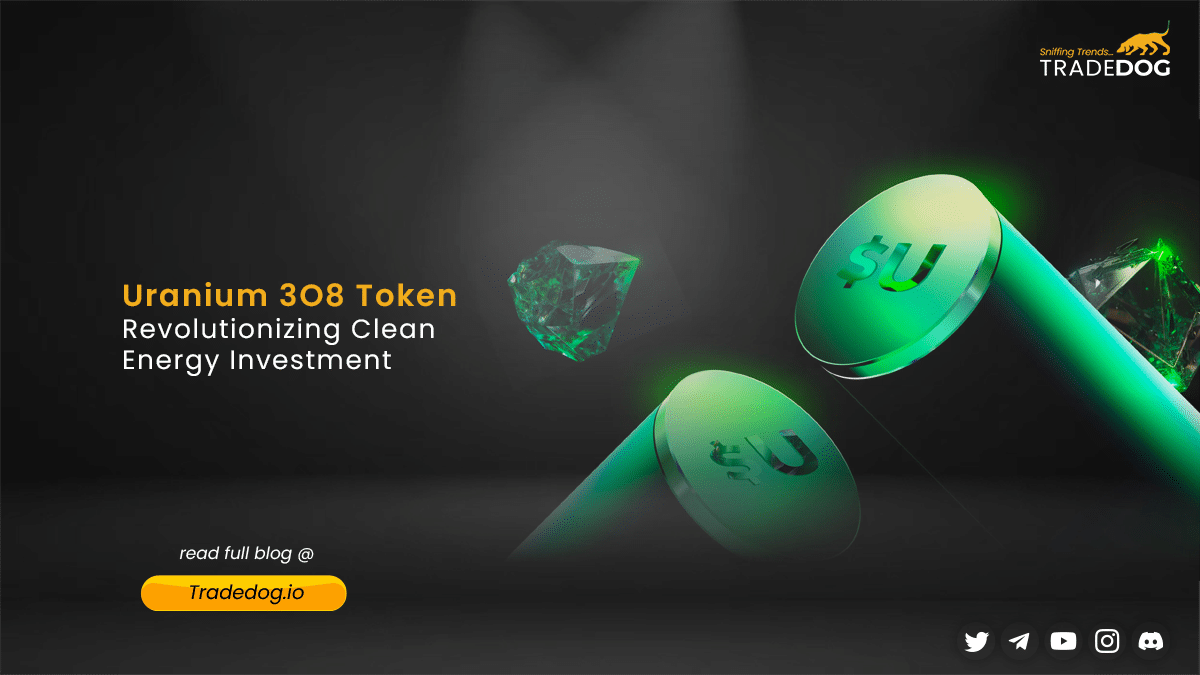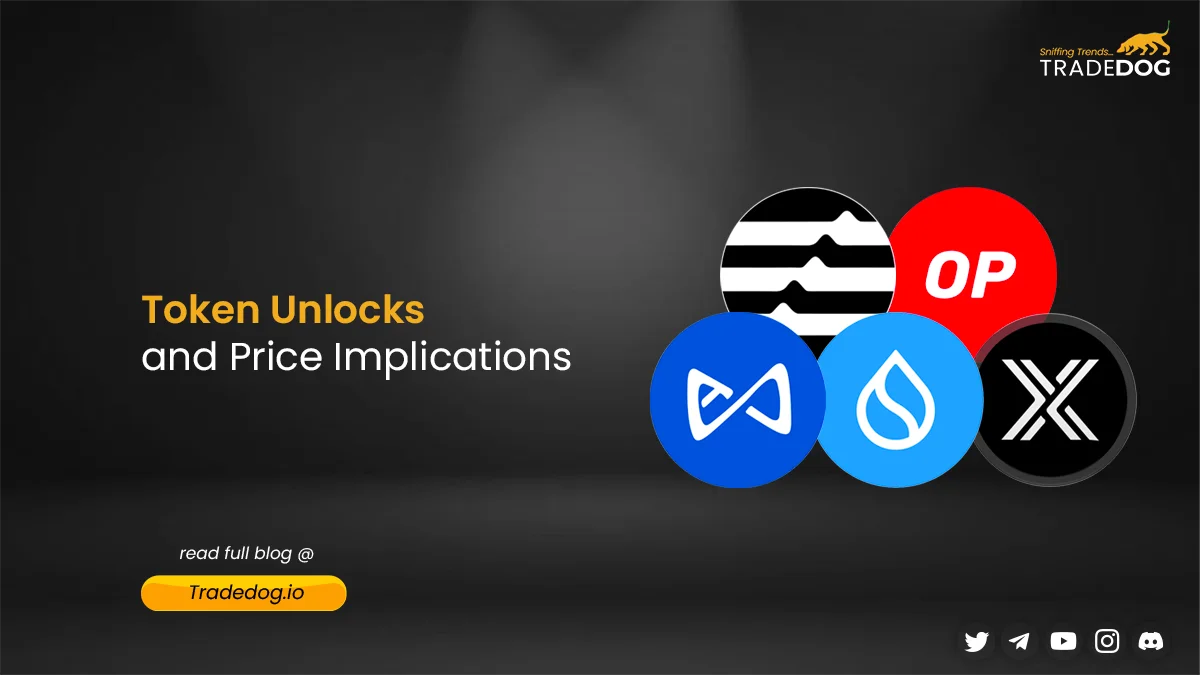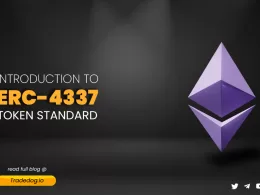Quick Links
DeFi or Decentralized finance has seen immense growth since 2020 which was the year when a plethora of users started to get onboard on DeFi platforms. DeFi’s supremacy had locked in billions of dollars across numerous platforms in 2021. Total Value Locked (TVL)–a measure of DeFi transaction value – grew by 14x in 2020 and in 2021, more than quadrupled to a total value of $112.07 billion at its peak. Data from DeFiLlama shows the growth of TVL in DeFi protocol from the year 2020 and it can be clearly seen that the growth has been exponential.
There seems to be a minimal restriction on what can be done with DeFi, whether it is investors using decentralized exchanges, staking tokens in various ecosystems to make interest, or taking out loans utilizing smart contracts. Amongst these protocols, staking came out to be one of the activities in DeFi protocol which saw growth in the years 2020 – 2021 as users started to use their funds to earn additional amounts by receiving interest on their deposits.
In simple terms, staking is an activity of locking the token to a protocol in order to receive additional rewards. This can be compared to traditional investing protocols like bank deposits where the users invest their money in order to earn interest. Contrary to a centralized platform like banks, DeFi protocols provide a much higher rate of returns.
With the tremendous growth in demand for staking platforms, many competitors started entering this market which led to users distributing their tokens all across the platforms. One of the drawbacks of staking was that it required you to lock up your coins for a minimum amount of time. During that period, you’re unable to do anything with your staked assets such as selling them. Due to this, many users started to hesitate from locking up their tokens after looking at the volatile markets.
This problem was addressed by liquid staking platforms which follow a simple concept in which the staking platform provides a receipt for the staked token, which means that the token is not only getting staked, but the staker is getting a liquid token in return which can be used to provide liquidity to another pool and hence generate more returns.
What is liquid staking and how it is different from staking?
As mentioned above, liquid staking is known by this name mainly because the liquidity provider gets a liquid token(more like a receipt) for the deposit made on the platform unlike the traditional approach of staking in which the LP has to stake the token for a minimum duration in order to generate yield on the platform. In order to participate in direct staking, investors need to have a minimum amount of the chosen cryptocurrency in their wallet. For example, investors need a minimum of 32 ETH to stake in Ethereum. Liquid staking aims to solve this. This could be understood by the application of Lido Finance, which is called the liquid staking king with a TVL of $6.5 Bn at the time of writing.
In Lido finance liquid staking, you receive a st token that exactly equals the native tokens you have staked after depositing them on the platform. Using these st tokens, users can increase their yield in addition to the staking yield by providing liquidity to the pools containing the st tokens. Although Lido does not allow the users to unstake the Ethereum deposited on the platform, it is possible for the users to swap the st eth with the eth pools available on platforms like Aave and Curve.
How Does Liquid Staking Work?
To understand the mechanism of liquid staking let’s refer to the flowchart provided below –
Understanding this by an example, let’s say you want to stake 1000 SOL into a liquid staking protocol like Lido (which provides staking options in ETH, SOL, MATIC, DOT, and KSM). The protocol will mint 1000 stSOL equivalent to the 1000 SOL. You will earn rewards from the initial 1000 SOL staked, while still being able to use the stSOL tokens for other purposes.
Although the minted token (stETH) is intended to be pegged as 1:1 with ETH, they are traded off in the free market which fluctuates the prices and hence can often result in ‘de-pegging’. This happened in June 2022 when investors rushed to sell off the st ETH resulting in a 5-7% discount below the price of ETH.
This brings us to the reason why staked Ethereum has increased in number in the past months
Ethereum Shanghai Upgrade
As it is evident from the graph above that the staked Ethereum has increased in the past months mainly due to the upcoming shanghai upgrade which will allow the users to withdraw the staked Ethereum from the smart contract which has also resulted in an increase in the price of the governance token of liquid staking protocols LDO, which was the largest weekly gainer, posting a tremendous 74.8% gain over the past seven days. This upgrade defeats the barrier of locking up Ethereum and hence liquid staking platforms are getting the benefit out of it.
Benefits and Risk of Liquid Staking
Benefits –
- As was already said, one major factor that encourages many users to start staking their tokens is the opportunity to earn recurring yield payments. Supporting a certain blockchain is just one advantage of liquid staking. Stakeholders that use liquid staking receive the same staking incentives and help their blockchain in the same ways as those who use conventional staking. The stake returns that one can obtain through liquid staking are likewise essentially the same as those that one would anticipate from traditional staking.
- Additionally, the advantages of liquid staking extend beyond staking payouts. One distinguishing quality of liquid staking that draws user interest is the liquidity associated with it. You have the chance to gain derivative tokens through liquid staking, which users can then use to generate further income. The liquid staking platform generates these derivative tokens, which provide users with the desired liquidity. With liquid staking, you receive both the derivative tokens and periodic staking incentives, whereas regular staking assures you only receive them. These tokens are quite advantageous in the market.
Risks –
- Risk of governance token takeover by liquid staking protocols – A huge number of governance tokens can be successfully consolidated by one protocol. The protocol might centralize governance ownership and basically take over the blockchain if it is successful in drawing in a large number of stakers and allocating these tokens to a very small number of hand-picked validators.
- Another risk is that the user can lose the derivative token in this volatile market because of many reasons like bad trading which eventually results in a user losing their staked token as well.
Top 5 liquid staking protocols with supported assets
- Lido Finance – Known as the king of liquid staking, Lido is a solution that is simple to use and decreases the entrance requirements for staking. You can use it to stake any amount of ETH on Ethereum 2.0 and generate passive revenue. To improve matters, Lido provides Liquid Staking to address the liquidity issue with traditional staking that was previously mentioned. To help with this, Lido will exchange one ERC20 token, stETH, for each ETH you bet. Additionally, you may exchange and move your stETH using decentralized financial protocols just like you can your ETH.
Supported assets on Lido include Solana (SOL), Ethereum (ETH), Kusama (KSM), Polkadot (DOT) and Terra Classic (LUNA)
- CoinBase – Standing in 2nd position, Coinbase, ahead of the Ethereum blockchain’s Merge in September started providing its own liquid staking token, Coinbase Wrapped Staked ETH (cbETH). Covering almost 15% of the market share, coinbase offers only ETH staking on its platform.
- Rocket Pool – With approximately 450,000 ETH staked since its launch, Rocket Pool ranks as the third-largest LSD protocol. Despite Lido’s protocol supremacy, Rocket Pool’s focus on node operator diversification is a major difference. For instance, Lido controls 29.95% of all validators on the Ethereum network, while only 29 node operators manage its whole validator set. In contrast, Rocket Pool’s validator share is only 10% of what Lido has, but it has 1,647 individual SNOs operating its validator share.
Rocketpool allows only Ethereum staking on its platform
- Parallel Finance – Standing in 4th position, with a TVL of $148Mn, parallel finance users can utilize the Parallel Liquid Staking Pallet to stake their tokens ($DOT and $KSM) and obtain a derivative token ($sDOT and $sKSM) in return. The derivative tokens are interest-bearing, so as the staking incentive increases, their value in relation to the underlying assets will also steadily rise. They can also be utilized to carry out further DeFi tasks inside the Parallel ecosystem. Some sTOKEN use-cases includes providing sDOT to the money market in order to receive higher interest. Further, sDOT can also be used as security for a loan of other assets and it is possible to exchange other assets for sDOT via Parallel Swap. Parallel finance allows users to stake $DOT and $KSM
- Ankr – With the highest number of assets, Ankr works just like any liquid staking protocol. For those assets which can be unstaked, to balance variations in a token’s price caused by rebasing, Elastic Supply Tokens allow the circulating supply to grow or shrink. The amount of ankrAVAX in circulation rises when you stake AVAX and earn Liquid Staking tokens. You must deliver your ankrAVAX to Ankr Staking in order to unstake your AVAX. Your ankrAVAX is destroyed, and you receive your AVAX back. Available assets on Ankr include ETH, MATIC, BNB, FTM, AVAX and DOT













